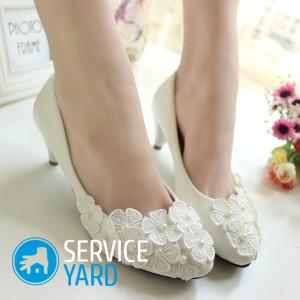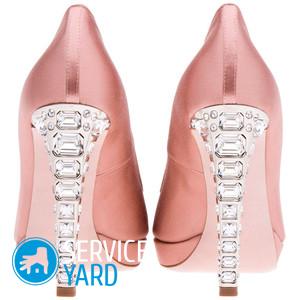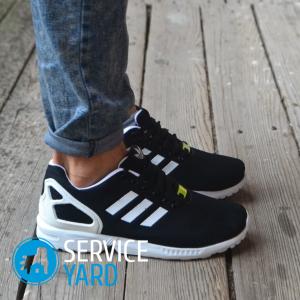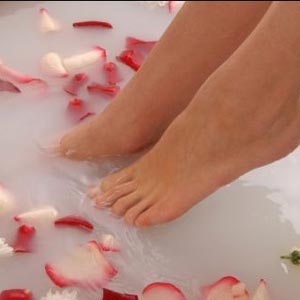To not rub shoes

Each girl, acquiring new shoes, already imagines herself defiling along the street, but nothing can give such a variety of emotions from joy, happiness to suffering, like new shoes. During the fitting, stylish shoes seem to us imperceptible on our feet and incredibly comfortable, but we only need to take a few steps along the street, and now we can’t help but think about what to do so that we don’t rub our shoes.
Usually, new shoes almost always rub calluses, no matter how carefully you choose your shoes, and no matter what soft material they are made of. In this article, we will look at how to soften shoes so that they do not rub or overshadow the joy of shopping.
to contents ↑Why does shoe rub my feet?
Some women intentionally try to buy shoes of a slightly smaller size just because they think that the leg in such a new thing will look much more neat and tiny. However, literally from the first tens of meters, fashionistas are cruelly disappointed, and grated heels can spoil the pleasure of the desired purchase. But often we have to suffer from shoes of our own size. There may be several reasons why the shoe rubs our legs:
- New stuff. If you rub new shoes, then do not carry it immediately back. New material, as a rule, always causes slight inconvenience, discomfort, and this should be treated with understanding.
- Not your size. As for the size, all people are different, and the shoes are produced according to certain standards. Therefore, picking up shoes of your size and so that the shoes do not rub at all is quite difficult.
- Inconvenient seam. An uncomfortable seam on shoes is also capable of rubbing corns, and this problem is already more serious than the previous ones. A rough seam can rub your feet so that the heel is deformed, and you can never pick up good shoes for yourself. The main thing is not to get to the operating table with such a problem in search of perfect beauty.
to contents ↑Important! If the shoes are rubbed due to improper seams, then it is worth taking it back to the store, as walking in it will be painful and uncomfortable. If you do not want to change the new thing, and everything suits you except for this terrible seam, then try to get rid of it by taking the shoes to the workshop, where an experienced shoemaker will put a soft patch on the seam.
We buy shoes right
In order not to rub shoes, you need to make a purchase correctly. To do this, you must follow simple rules:
- Be sure to buy new shoes at the end of the day, that is, in the evening. There is a rather simple explanation for this: it is in the evening that a person’s leg slightly increases in size. As practice shows, boots or shoes purchased in the evening do not rub your leg for tomorrow morning, or even at any other time during their further operation.
- New shoes must first be carried in order to do, in the future, without painful water calluses. Use the old folk method for this purpose, which allows the new thing to "sit" on the foot: soak a cotton swab with alcohol, moisten with a cotton pad all the places where corns can be rubbed.
Important! If the shoes are closed and rubbing it inside with alcohol is difficult enough, then use a more effective method.Rinse the shoe inside with alcohol, put warm socks on the legs and walk around the house for a while.
- When buying shoes, be sure to try on it not only while sitting, but also standing upright to check how she sits on her leg.
- In order not to rub the shoes, remember, the better the shoes you buy, the less problems they will bring after the purchase.
Important! When you figured out the practical side of the issue, pay attention to aesthetics. Read individual publications on style and fashion:
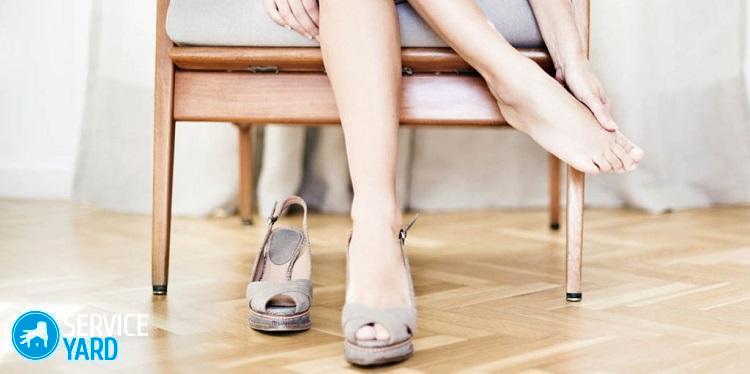
We customize shoes for ourselves
The problem with rubbing corn is “as old as the world”, and people have learned to cope with it successfully. There are a huge number of different tricks with which you can avoid the hassle that brand new shoes inflict on their owner. There are a lot of ways of fitting shoes “under the foot”, choose those recommendations and tips that will help you fix the seemingly most hopeless situation.
People's advice:
- To avoid rubbing shoes, if the problem is in the shoe back, use the old-fashioned method: tap the back of the hammer with a hammer - from the back, from the inside, from the outside and from above. Between the back of the shoe and the hammer, put a piece of cloth so as not to damage, scratch or deform the product itself.
- A good tool to soften the back of a shoe is soap or a candle. Apply your chosen remedy to the problem area. This will soften the interior finish and reduce friction. Repeat the procedure several times a day until the shoes are spread and stop pressing.
- So as not to rub the shoes in the heel, soak a small towel in vinegar and put it in the problematic shoe. Leave the slippers overnight.
- If the question is how to soften the shoes so as not to rub and expand the smaller items a little, moisten a small rag in boiling water and put in the shoe (after squeezing it out). After 15 minutes, put on the problematic foot with a warm toe. So walk around the house for about 2 hours and the result will not be long in coming.
- Tear the newspaper into small pieces and moisten them with water. Push wet paper firmly into your shoes, especially where they rub. After the newspaper pieces have dried, the shoes will slightly increase in size and will no longer press the leg. Do not try to speed up the drying process. Do not place shoes under the radiator or dry with other heating devices. The shoes themselves will dry out after about a day.
- In order not to rub shoes made of natural materials, it can be slightly expanded in the following way:
- Pour water into 2 strong plastic bags and tie them tightly.
- Put the bags in the shoes so that they are just in the problem areas.
- Put shoes and bags in the freezer overnight.
- Take out your shoes in the morning and remove the ice packs, but do not pull out the ice until it melts, as the bag may freeze to the inside of the shoes.
Important! This method can only be used for shoes made of genuine leather, but you should not experiment with patent leather.
- If your favorite genuine leather boots after the summer season have become cramped, then apply a thick layer of baby cream on them and leave them to soak for 3-4 hours. After the procedure, the shoes will become soft and comfortable again.
- Before leaving the house in brand-new shoes just bought, grease your feet with fat cream (you can use baby cream). The skin on the legs will become much softer, and the shoes will not rub like that.
- Before putting on new boots or shoes, lubricate the inside of the shoe with castor oil. By such a procedure, you will not only contribute to the wearing of shoes, but also will provide a beneficial pleasant service to your legs.
- Wrap a box of new shoes overnight with a wet towel.In the morning, such shoes will be much easier to wear.
- To soften the backs of shoes, use glycerin, which can be bought at any pharmacy. First you need to expand the pores of genuine leather. To do this, place a hot, wet towel inside the shoe. After 15 minutes, grease the backs on the inside with glycerin and leave overnight.

Special products for rubbing shoes
If for some reason all of the above folk methods are not suitable, then go to the shoe store. It is there that you will be offered many effective tools and devices that will help to cope with the problem of rubbing and discomfort. Here are some suggestions:
- Get a special spray-stretch or foam-stretch. Apply the product on the inner surface of the shoe in places where corns may appear. Then put on your shoes and go around at home for a while. Repeat the procedure several times a day until the desired result is obtained.
- Use a spray to stretch, so as not to rub the shoes, you can as follows:
- Warm up new shoes or boots from the inside with a hairdryer.
- Quickly clean the inside of your shoe with a stretch spray.
- Wear a tight toe on your leg.
- Walk around in your shoes for a while until the inside cools down.
- Repeat the procedure several times until the desired result is obtained.
- Get special soft strips from rubbing shoes. Stick the strips on the inside of the shoe where the callus may appear. The strips reliably protect the skin of the legs from unwanted friction.
- Small silicone heel pads are attached to the inside of the shoe inside and prevent corns from forming.
- Special pads are sold in stores that will allow you to quickly not only expand new shoes, but also give them the necessary shape and size.
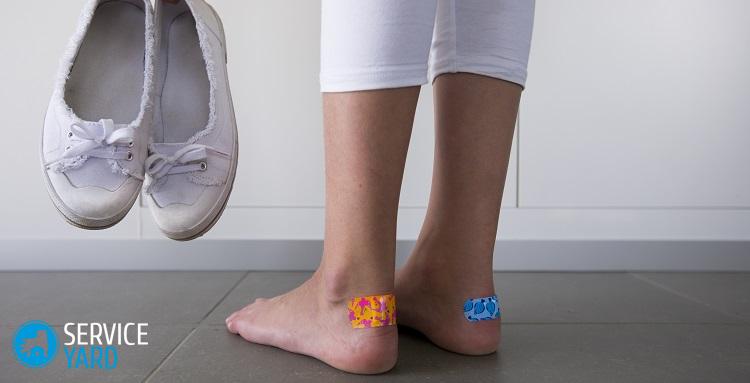
What to do if they rub sneakers?
Shoes made of artificial materials: leatherette, textile, synthetic, can also be softened and slightly increased in size. To soften the backs, so as not to rub the shoes, you can use the following tools:
- Vegetable oil. Dampen a cotton swab with vegetable oil and treat the heels of the shoes from the inside. Leave the products in this form for several hours (preferably at night) for impregnation.
Important! Typically, linseed oil is used for this procedure. Do not spare it, and simply blot excesses later with a napkin.
- Alcohol. This substance does not contain acids, therefore it is not able to corrode synthetic materials. However, use it carefully: dilute the alcohol with water and work the back of the inside, and then remember the problem area with your hands.
Important! Before softening the shoes so that they do not rub, in this way, check if there is a cardboard sealing insert in the backs. From getting wet, the cardboard can not only soften, but also deform, that is, lose shape.
- Glycerol. A universal tool suitable for anyone - both leather and artificial shoes. We wrote about the method of its application above.
Important! When the size and completeness of a bright shoe is perfect for you, bring it to perfection in your look. Learn some interesting ways and original ideas, how to tie laces on sneakers.
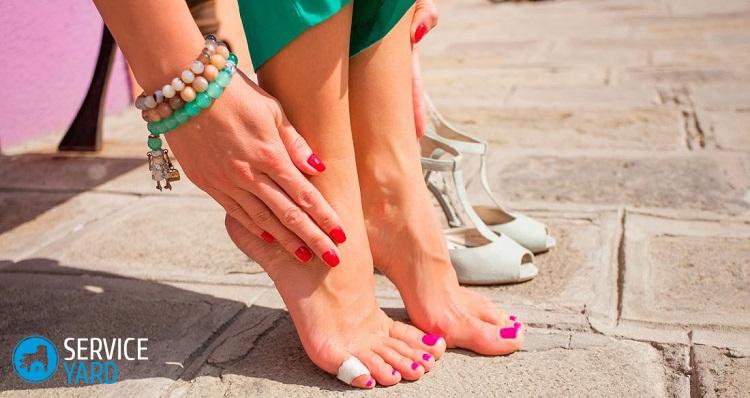
How to protect your feet from hard backs of shoes?
Hard backs of shoes - this is a completely solvable problem, but it requires some effort and time. However, if the backs of boots or other shoes turned out to be tough, the task becomes more complicated, since it is impossible to get to a problem place because of the high shafts.
Neither a hammer nor other mechanical tools will help here, but to wet the backdrop from the inside is not easy at all. It remains only to try to protect and protect the heels from the hard backs of shoes. There are the following tools for this:
- Pencil from corns.A multifunctional product creates the effect of lubrication and at the same time softens the heels, that is, makes the inner surface of the boots sliding. The product is available in convenient stick packaging, does not spoil shoes, leaves no residue, neither on it, nor on tights. The callus pencil also protects the heels from rubbing.
- Adhesive plaster. To protect the heels from the hard backs of the shoes, stick a double layer of patch: one directly on the foot, and the second on the inside of the shoe.
Important! Adhesive plaster is not very effective, since when worn it can peel off and stray into a lump, while rubbing the skin even harder.
- Silicone pads. In combination with adhesive tape, silicone pads will effectively protect the heel. Stick the product inside the shoe so that the foot does not slip and does not rub the heel against the heel.
- Patch. This method is suitable for shoes that are just on the foot or slightly longer in size, because, otherwise, you will shorten even more the free space inside the shoe. Glue or sew any patch of soft fabric from the inside of the shoe. It will save you from hard backs, and if necessary, it will close your leg from a hard seam.

Dry Callus Treatment
Corn on the foot is a problem that always causes a lot of inconvenience. A corn does not form immediately, but appears within a few days. This is usually an extremely long process. After several years of using tight and uncomfortable shoes, a mound of dead skin is formed, which is called dry corn. Corns of this type begin to hurt and cause a lot of inconvenience. Each step is difficult and brings sharp pain.
Consider folk remedies to combat dry calluses:
- The easiest way to remove corns is a soap-soda bath. Just pour 1 liter of warm water into a bowl, then pour a little soap and soda into it. Keep your feet in the solution - 15 minutes, rub the problem area with a pumice stone, rinse with water, wipe with a towel and apply a nourishing cream. To enhance the effect, infusion of chamomile can be added to the soap-soda bath.
- Compresses from tinctures of garlic on wine vinegar, in the ratio: 1 clove of garlic to 1 tbsp. vinegar. After 2 weeks of insisting, do compresses overnight.
- Onion peel. Put it in a jar, pour table vinegar and leave for 2 weeks. Then drain the vinegar, and apply the husk at night to the problem area, lubricating it first with petroleum jelly or fat cream.
to contents ↑Important! To keep your legs always beautiful, see even more helpful tips about foot skin care.
Stock footage
A universal and 100% effective method for softening shoes does not exist. The choice of this or that method and means depends on the material of the manufacture of shoes, on the style and on many other features of a particular pair. If you can return the failed model to the store, then use it. If this is not possible, then use our tips and folk wisdom, and the next time be sure to choose the right shoes.




